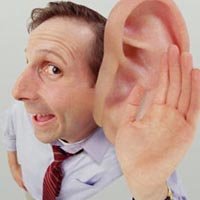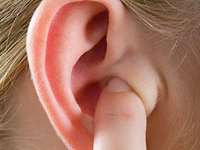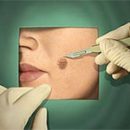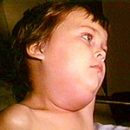Your child has a constantly laid nose, frequent colds and otitis, breathing only through the mouth, snoring at night? These are faithful signs of hypertrophy of pharyngeal almond. Simply put, the child has adenoids. As a rule, such a diagnosis requires operational treatment - removal. At what age is it better to do and is there an alternative? What is adenoids?
Content
What is adenoids?

In the normal state of adenoids in children are small lymphoid formations in the nasophal. This is a normal immune fabric with the ability to produce immunoglobulins necessary for the normal life of the children's body. However, as a result of multiple colds, infections, allergies, they may increase and inflame. Changes in the nasopharynxal almond are connected, on the one hand, with the body allergization, on the other, are evidence of insolvency in the immunity system. Adenoids, protecting the children's body, are struggling with adverse effects of polluted external environment. As a result, the mucous discharge from the nose appears, adenoids swell, the nasal breathing is hampered.
The growth of adenoids has three degrees:
I degree- In the afternoon, the child breathes quite loose enough, the mouth is closed, and during sleep, when the volume of adenoids increases in the horizontal position of the body, it becomes harder to breathe it, embrozed.
II - III degree - Strusting half or completely closed the rear sections of the nose, holes connecting the nasal cavities with the nose of the pharynx; Children often snoring in a dream, forced to breathe mouth around the clock.
For the first time adenoids (hypertrophy of pharyngeal almonds) were described in 1873 by the Danish scientist Mayer. The disease occurs in 5-15% of children. Adenoids are more often observed at the age of 3-15 years, but may occur at earlier age, and 70-year-old old people. Adenoids can be truly hypertrophored, and may be in a state of acute or chronic inflammation. With inflammation, they become the source of bacterial infection of the body, pathologically affect the respiratory tract, on the nervous and immune system of the body.
Complications
- Frequent thrills appear, over time, turning into chronic rhinitis.
- Children suffering from adenoids usually sleep well, often snoring, they can disturb them in connection with the US language. The child becomes sluggish and apathetic. It becomes illegible, and the voice is benus. Adenoid growths limit the mobility of the soft sky, so the proper formation of sound is disturbed.
- With a long-term course of the disease in children, there is a violation of the facial skeleton development: constantly hitting the lower jaw becomes a narrow and elongated, an incorrect bite is formed. In the upper jaw, the solid sky is formed high and narrow («Gothic» sky).
- Long-term surface breathing through the mouth leads to a violation of the formation of the chest.
Treatment
For a specialist to make a diagnosis «adenoids» easy for this not required special equipment. Treatment, as a rule, surgical. Conservative methods of treatment (washing, drops, inhalation, but in no case warming up!) Applied with a slight increase in adenoids or in the presence of contraindications to the operation.
Adenoid removal operations are carried out in almost all children's hospitals, where there is an ENT branch, and do not represent any difficulties for a specialist. This operation is not important for the patient: as a rule, children carry it well.
After the operation, it is necessary that the child observed the gentle mode: it can not run, jump, swim in a hot bath, wash his head; Be sure to use semi-liquid non-smoky food. A week after discharge from the hospital, the child can already go to school (kindergarten).
Do I need to remove adenoids?
Considering the role of nasopharyncing almonds in the reactions of general and local immunity, its activity in the formation of antiviral protection, many doctors prefer conservative methods for the treatment of adenoids. Moreover, firstly, a small child remove completely adenoids is almost impossible, and secondly, adenoid fabric has the ability to restore, and after a while the situation that led to the operation may repeat. Not uncommon when children make two, three and even four times adenotomy (removal of adenoids). The operation may be shown in cases where all possible methods of conservative treatment have been exhausted and ineffective.
Starting from 8 - 9 years of adenoids, having completed its function, begin to decrease independently and most children by 11 - 14 years old, almost completely disappear.
Before deciding to remove the adenoids child, show it to several more doctors, besides the one that prescribed or sent to surgery. In the event that great adenoids are confirmed, spend the child a treatment and more than repeated. And if you do not get improved nasal respiration, stopping the discharge from the nose, the disappearance of the snoring or reducing other manifestations of the disease, then only in this case, solve the operation if it really needs.
Whether adenoids will grow again?
To remove adenoids there are its favorable periods. The process of growth of a child can be divided into periods «Pulling» (When the child grows up in length in length) and periods «rounding» (when growth slows down). Adenotomy operation is undesirable during the stretching period when the rustic growth of nasopharynk. It is also noticed: the adenoids are removed in a shorter age, the greater the likelihood that they will grow again. The most favorable periods to remove adenoids - from five to six years, from nine to ten and after 13-14 years.









